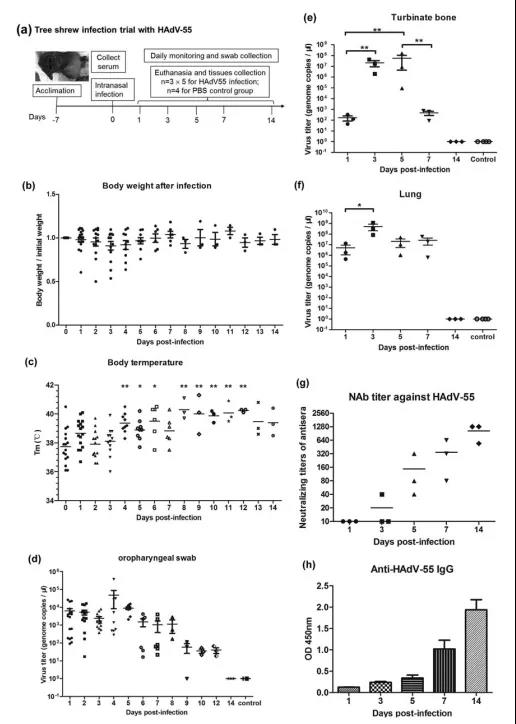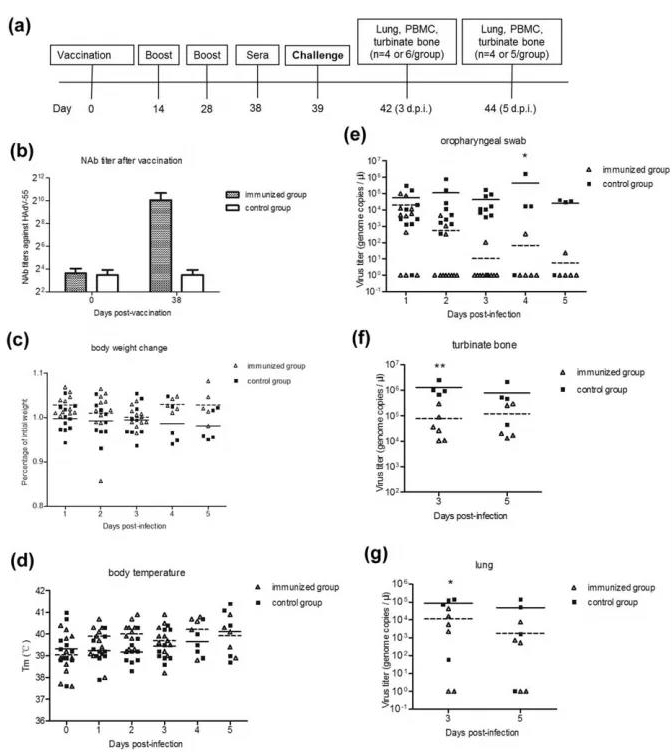Zhou Rong’s Research Team Made a Breakthrough in the Study of Animal Models for Human Adenovirus
2021-03-221239Recently, Zhou Rong’s research team of the State Key Laboratory of Respiratory Disease found for the first time the Chinese tree shrews, a kind of small primitive primates, can support in vivo replication of human adenovirus type 55 species B, which is a good animal model for HAdV-55 infection. Chinese tree shrews have the potential to be an animal model for other types of human adenovirus species B, and this research will advance the experimental studies of in vivo human adenovirus species B, providing theoretical basis and support for the study of the pathogenic mechanisms of adenoviruses.
HAdV-55 challenge experiments showed that Chinese tree shrews have similar symptoms to human infections, including weight loss and increase in body temperature. HAdV-55 can replicate and proliferate in large numbers in the lungs and conchaes of Chinese tree shrews. The Adv-55 specific neutralizing antibodies and IgG in Chinese tree shrews were significantly increased, much higher than those in mice (see Figure 1).

Figure 1 Tree shrews infected with HAdV-55
similar symptoms and replication to those of the natural hosts
In addition, this study also proves that the viruses can be spread in tree shrews through close contact with infected people or droplets, and tree shrews are susceptible to Adv-55 infection (see Figure 2); and can be applied to the R&D of adenovirus vaccines (see Figure 3).

Figure 2 Tree shrews can be infected with Adv-55 through close contact or droplets

Figure 3 Tree shrew as an animal model for the assessment of HAdV-55 vaccines
The research result Chinese tree shrew: a permissive model for in vitro and in vivo replication of human adenovirus species B was published in the internationally renowned journal Emerging Microbes & Infections. Associate researcher Li Xiao of the research team, and Dr. Zhou Zhichao are the co-first authors, researcher Zhou Rong and associate researcher Tian Xingui are the co-corresponding authors of this paper.
















